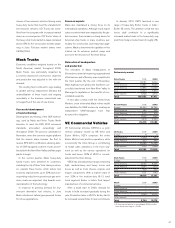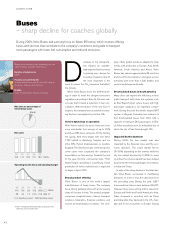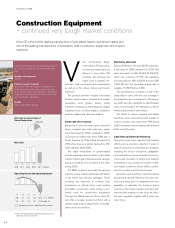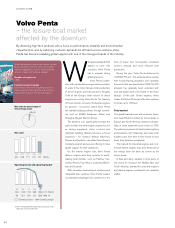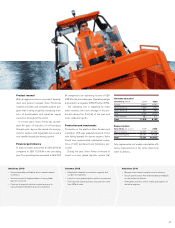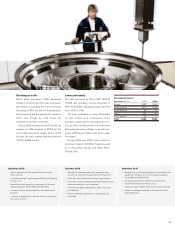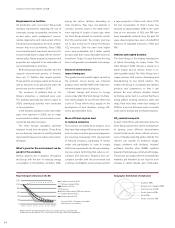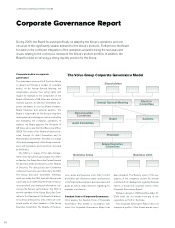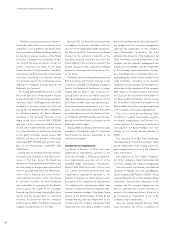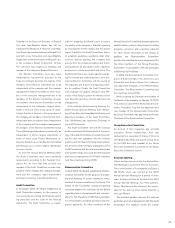Volvo 2009 Annual Report Download - page 53
Download and view the complete annual report
Please find page 53 of the 2009 Volvo annual report below. You can navigate through the pages in the report by either clicking on the pages listed below, or by using the keyword search tool below to find specific information within the annual report.
Declining air traffic
World airline passenger trafc decreased
sharply in the rst half of the year, and gradu-
ally leveled out towards the end of the year.
According to IATA, the airlines’ nancial prob-
lems increased and are expected to remain in
2010, even though the total losses are
expected to decrease somewhat.
Airbus and Boeing delivered 979 aircraft, an
increase of 14% compared to 2008, but the
order intake decreased sharply. At the end of
the year, the order backlog had declined from
7,429 to 6,863 aircraft.
Outcome 2009
Operations have been adapted to expected lower •
volumes, for instance through personnel reductions.
Volvo Aero has delivered according to agreed plans. •
The work to reduce lead times and lower product costs •
have continued, but is not completed.
The American aftermarket business has not turned •
for the better.
Efforts to develop components in composites has •
continued.
Ambitions 2010
Manage the continued development responsibility and •
supply test hardware for the new engine programs
Trent XWB and PWG1000G.
Increase productivity in carried-out investments, •
shorten lead times and reduce costs.
Continue to gain market share within engine services.•
Conduct a strategic overhaul of the American after-•
market business.
Ambitions 2009
Adjust operations to the expected downturn and •
lower volumes.
Continue working on improving productivity and lowering •
product cost.
Handle the development of components to the new •
engine programs Trent XWB and PW1000G.
Increase volumes and protability in the aftermarket •
business.
Continue to expand the customer offer of composites •
for cold structures.
Net sales by market
Volvo Aero, SEK M 2008 2009
Europe 3,580 3,942
North America 3,618 3,508
South America 59 34
Asia 240 205
Other markets 128 114
Total 7,625 7,803
Lower profitability
Net sales increased by 2% to SEK 7,803 M
(7,625) and operating income amounted to
SEK 50 M (359). Operating margin declined
from 4.7% to 0.6%.
The lower protability is mainly attributable
to lower volumes as a consequence of the
downturn, in particular for new spare parts. It is
also an effect of lower prots in the American
aftermarket business. Delays in aircraft pro-
grams at Boeing and Airbus also had a nega-
tive impact.
During 2008 and 2009 staff reductions
have been made in Trollhättan, Sweden as well
as in Kongsberg, Norway, and Boca Raton,
Florida, USA.
49




